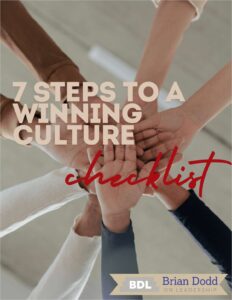The Story of a Toxic Culture
On October 3, 2024, the Kitsap County Sheriff’s Office received a most unusual 911 call. A woman in nearby Poulsbo, Washington stated she was forced to flee from her home after being surrounded by almost 100 raccoons. See the video below.
Approximately 35 years ago, the woman started feeding raccoons. But over time, the raccoons began to see her as a food source. Recently, a sudden surge of the rodents took place. A voice-over from the sheriff’s office said, “Kitsap County Sheriff’s deputies came to her rescue after she was forced to run away in her car to escape the furry and very hungry creatures.”
Per this article, Kevin McCarty, a spokesperson for the sheriff’s office, told the Associated Press, “This is a nuisance problem kind of of her own making that she has to deal with.”
7 Things Which Create Toxic Cultures
While this is certainly an unusual, even shocking, story, a closer look reveals it is really a lesson on toxic cultures and what creates them.
Whether you lead a business, church, non-profit, or athletic organization, the following seven things which create and fix toxic cultures:
1. Who You Hire
Toxic cultures start with who you hire. Every person you bring into your organization changes your culture for either the good or bad. Culture never stays static. Nothing affects culture more than your talent acquisition strategy. As a result, toxic cultures are a making of our own doing.
2. Accommodating Toxic People
This problem of excessive raccoons began over 30 years ago with the feeding of a single animal – the equivalent of a single bad hire. Toxic people should be removed from your organization rather than accommodated. Otherwise, the following will take place…
3. Toxic People Attract Other Toxic People
Just as one raccoon became a hundred, toxic people have a way of multiplying. There are two reasons why – First, birds of a feather flock together. They see your organization as a food source and invite their friends. Second, good people do not want to hang around toxic people. They will simply move on.
4. Toxic People Will Eventually Take Over Your Culture
If you allow toxicity to grow, it will eventually take over your organization. The following then needs to take place.
5. Toxic People Can Get Aggressive
McCarty said the raccoons “were becoming increasingly more aggressive…If she pulled up her car, they would surround the car, scratch at the car, surround her if she went from her front door to her car or went outside at all.”
Toxic people can be emotionally and relationally intimidating. Oftentimes, they are bullies with low emotional intelligence.
6. Don’t Feed Toxic People
How do you feed toxic people? By encouraging their behavior and not addressing it. You must cut off their food supply. Toxic people need to be held accountable and eradicated. Otherwise, they simply keep coming back for more.
7. Get Help Cleaning Up Your Culture
This raccoon problem was too big for one person to handle. 911 needed to be called. If you have a toxic culture, you will need help cleaning it up as well. As John Maxwell teaches, everything rises and falls on leadership. New leadership will be required.
As a leader, are you prepared to make the necessary changes to clean up your culture? Otherwise, your toxicity will continue.
FREE Helpful Resources
In conjunction with one of my content partners, I created two new checklists to help you identify ways you can improve your leadership:
You can download them by clicking HERE and HERE or on the images below.
Now a special request. These are complimentary resources. Therefore, if you download them, make special note of the ads on the pages you will see. If any interest you, please click the images and learn more about their products. Thank you as this helps cover the cost of production.
#CommissionsEarned


